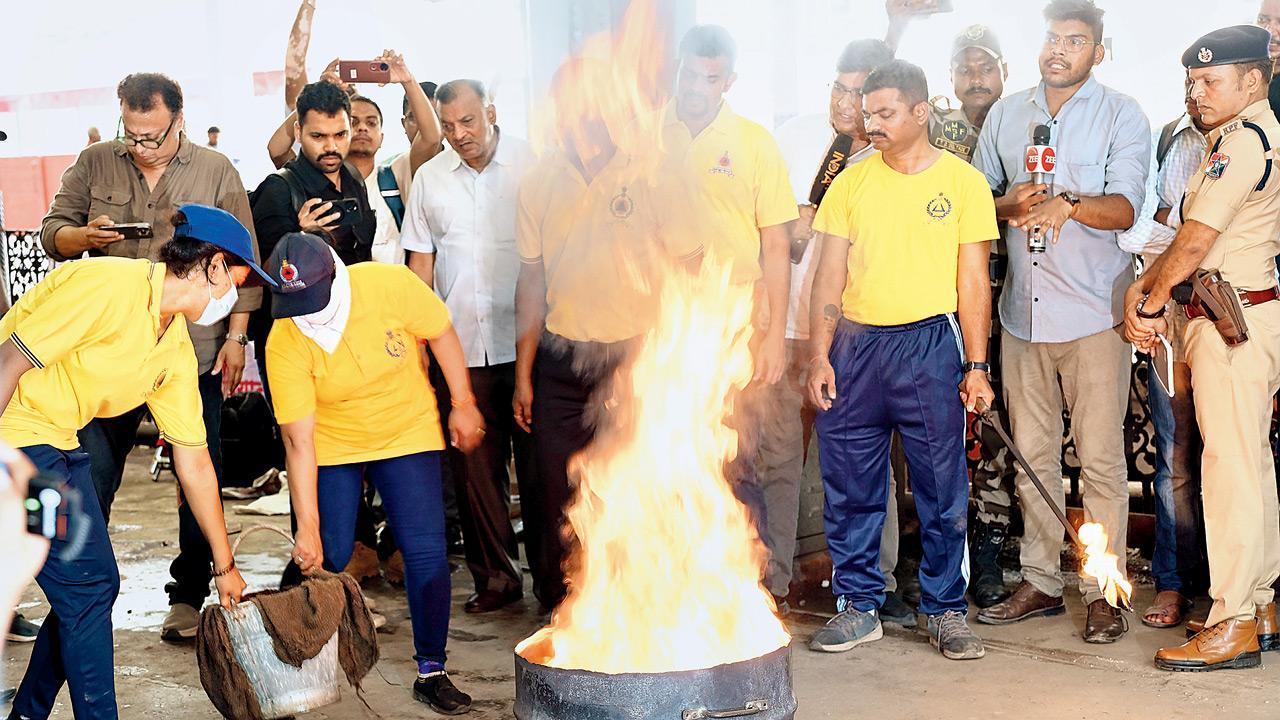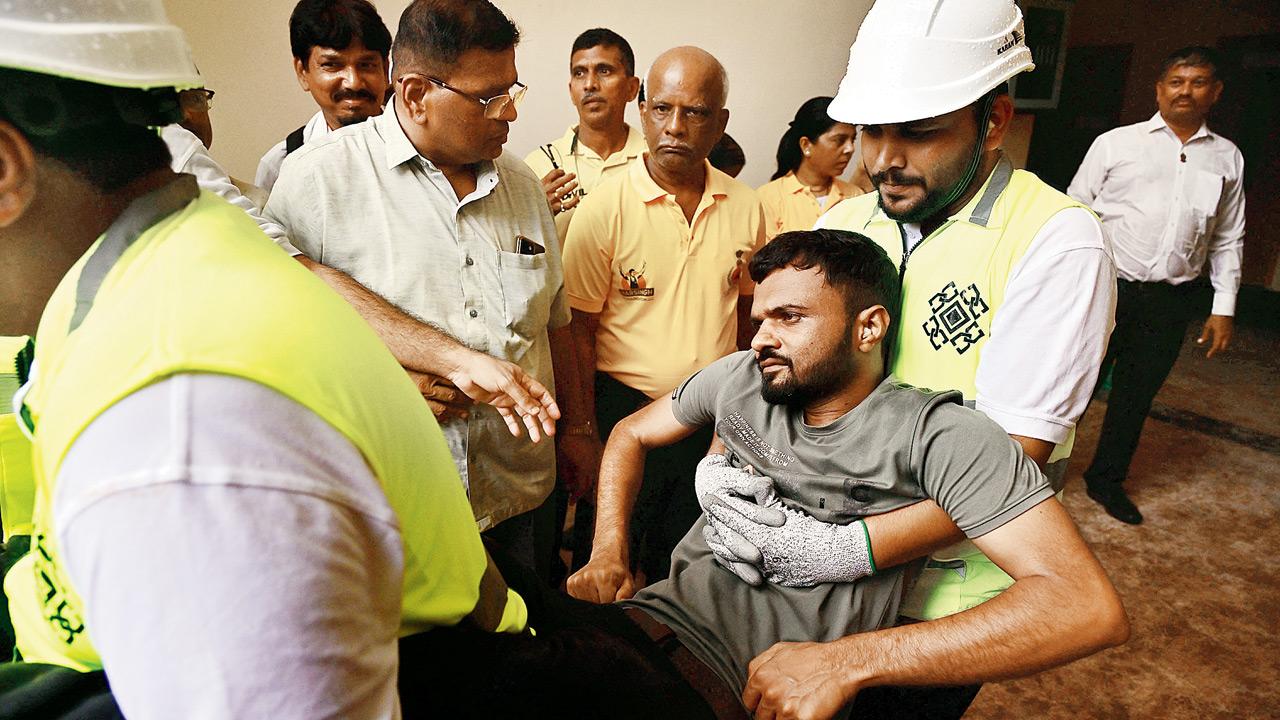In Mumbai, the operation—termed Operation Abhiyas—simulated a power blackout at Anushakti Nagar and Tarapur Atomic Power Station to test inter-agency coordination and civilian evacuation preparedness

State agencies carrying out the drill to prepare civilians in case of an emergency. Pics/Shadab Khan and Kirti Surve Parade
As a large-scale civil defence operation was conducted across the coastal districts of Maharashtra, Pune, and Nashik on Wednesday evening, no real-time emergency response was required from state agencies such as the National Disaster Response Force (NDRF), State Disaster Response Force (SDRF), or the Fire Brigade, due to the controlled nature of the exercise. Emergency response forces remained on standby throughout the evening and were monitored via Disaster Management Control Rooms at the Government of Maharashtra headquarters at Mantralaya and at respective district headquarters.
In Mumbai, the operation—termed Operation Abhiyas—simulated a power blackout at Anushakti Nagar and Tarapur Atomic Power Station to test inter-agency coordination and civilian evacuation preparedness. The Brihanmumbai Municipal Corporation (BMC), NDRF, and Mumbai Fire Brigade participated in the multi-agency exercise, supported by NCC cadets and NSS volunteers.

The drill will be replicated daily over the next six days to prepare civilians and response teams for various emergency scenarios. officials from civil defence said, “The exercise will be carried out in phases over the next six days, and citizens are likely to experience scheduled power blackouts. To mitigate panic, control rooms in districts and municipal corporations have been placed on standby to coordinate in case of emergencies.”
A senior official from the Department of Disaster Management, Relief and Rehabilitation (DMR\&R) said, “There are 22 operators at the state emergency operations centre who have been briefed with a standard operating procedure (SOP) to respond to emergency scenarios, take phone calls from citizens, and help prevent panic. We also have an SOP for inter-agency coordination during such emergencies. However, we did not face any real-time emergencies on Wednesday.”
To balance the requirements of inter-agency coordination during emergencies and war-like scenarios, the government has acknowledged the need for a dedicated hotline and plans to launch one soon. Civil defence officials said the drill provided an opportunity to simulate and understand the exact coordination required during such emergencies. They reported an average response time of 3.3 minutes from alert to action, which they considered satisfactory.
A senior government official added, “Large-scale inter-agency coordination is essential during such scenarios. This drill has given us valuable insights into the importance of training and capacity-building—not just for emergency responders but also for civilians.”
 Subscribe today by clicking the link and stay updated with the latest news!" Click here!
Subscribe today by clicking the link and stay updated with the latest news!" Click here!








